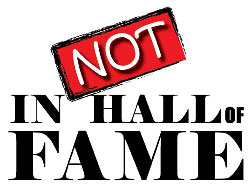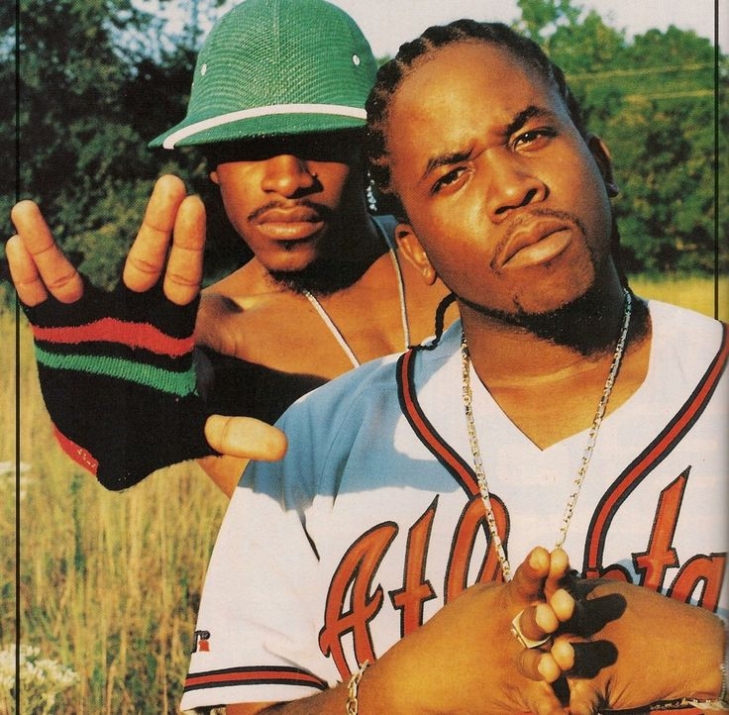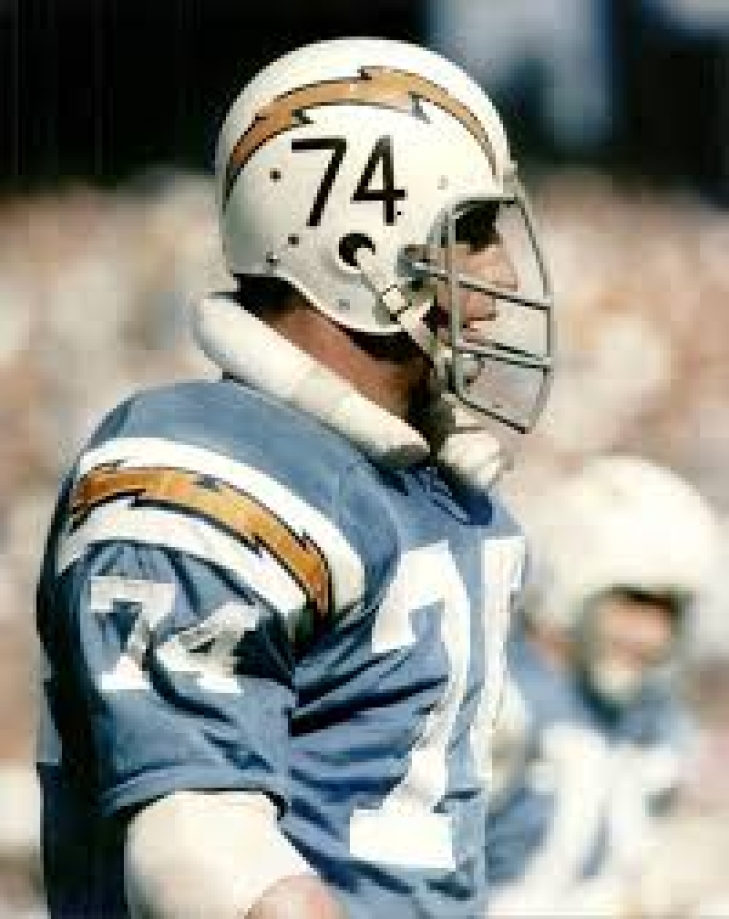
Committee Chairman
The Rock and Roll Hall of Fame names its 2025 Class
On this evening’s American Idol, the Rock and Roll Hall of Fame announced the 13-person class of 2025.
As always, it is a mixed bag of genres and generations, and entries we did not see coming.
That’s the Rock Hall for you.
Here are the incoming members of the Rock Hall:
Entering via the traditional vote:
Bad Company: The Classic Rock group had multiple hits in the 1970s and early 80s and were inducted on their first ballot, though they have been eligible since 1997.
Chubby Checker: Best known for the “Twist”, Checker has been eligible for the Hall since its inception in 1986, but was never nominated until this year.
Joe Cocker: Like Bad Company and Checker, Cocker is inducted on his first attempt but never received a nomination until decades after first being eligible.
Cyndi Lauper: Lauper shot to fame in the mid-80s and enters Cleveland on her second nomination. She was first eligible in 2009.
Outkast: The influential duo from Atlanta also entered on their first try, though they have only been eligible since 2019.
Soundgarden: The third time is the charm for the Seattle band that was previously nominated in 2020 and 2022.
The White Stripes. Jack and Meg White become Rock and Roll Hall of Famers on their second attempt, the first coming in 2023.
Billy Idol, Joy Division/New Order, Mana, Mariah Carey, Oasis, and Phish did not make the cut.
Also entering the Hall are Warren Zevon and Salt-N-Pepa, who enter via the Musical Excellence category, which, bluntly is a way for the Hall to bypass the committee. Zevon was previously nominated in 2023, and Salt-N-Pepa has never been on a ballot. They also selected producer Thom Bell, pianist Nicky Hopkins and bassist Carole Kaye. The final inductee is Warner Bros. Executive Lenny Waronker.
Next month, we will begin revisions on our Notinhalloffame Rock list.
We here at notinhalloffame.com would like to congratulate the newest members of the Rock and Roll Hall of Fame.
The impact of Hall of Fame exclusions on baseball legends
Baseball's Hall of Fame is a prestigious honor that many players aspire to, yet not all deserving athletes receive this recognition. This article explores the implications of these exclusions on the sport and its history.
The Hall of Fame serves as a testament to the achievements of baseball's greatest players, but the selection process often leaves out individuals who have made significant contributions to the game. As the sport evolves, so do the criteria for induction, leading to debates over who truly deserves a place in Cooperstown. Modern trends in sports culture, such as the rise of digital platforms, highlight how the game continues to engage new audiences, ensuring its legacy endures. Understanding these dynamics is crucial for appreciating the broader impact of Hall of Fame exclusions. Additionally, platforms like vegasslotsonline no deposit bonus offer fans new ways to interact with the sport, further enriching the experience.
Notable players who remain unrecognized
Several baseball legends have yet to be inducted into the Hall of Fame, despite their impressive careers. Lou Whitaker, for example, is often cited as a player whose contributions have been overlooked. His consistent performance and leadership on the field are comparable to those of many inducted players, yet he remains outside the Hall. This exclusion raises questions about the criteria used for selection and whether they adequately reflect a player's impact on the sport.
Examining the careers of these overlooked players reveals a pattern of undervaluing certain achievements. While statistics play a significant role in the selection process, intangible qualities such as leadership and clutch performance are often harder to quantify. These elements, however, are crucial to a player's legacy and should be considered alongside traditional metrics. Recognizing these players would enrich the narrative of baseball history, ensuring a more comprehensive representation of the sport's diverse talents.
The debate over these exclusions underscores the need for a more inclusive approach to Hall of Fame selections. By acknowledging the varied paths to greatness, the Hall can honor a broader spectrum of contributions, enhancing its role as a custodian of baseball's rich history.
Complexities of the Hall of Fame voting process
The Hall of Fame voting process is complex and often criticized for its lack of transparency. Voters weigh factors such as career longevity, peak performance, and personal accolades differently, leading to inconsistencies in selections. While statistical achievements are crucial, other elements like character and sportsmanship also influence decisions, adding layers of complexity to the process.
Understanding the intricacies of this process is essential for appreciating the challenges faced by voters. Eligibility criteria, including waiting periods post-retirement and vote thresholds, are just the beginning. A player's induction can hinge on broader narratives shaped by media and public sentiment, which can vary over time. Critics argue for more standardized metrics to ensure fairness and transparency, allowing for a more equitable evaluation of candidates.
Reforming the voting process could provide a clearer pathway for deserving athletes, acknowledging the evolving nature of baseball analytics and appreciation. Until then, the debate over who deserves a place in the Hall of Fame continues to engage fans and experts alike, highlighting the passion and complexity inherent in preserving the sport's legacy.
Modern sports culture and its influence
Digital platforms have transformed how fans engage with baseball, offering new ways to explore the sport's history and its legendary figures. Websites and promotions, such as those found on online gaming platforms, capture the attention of new generations by integrating interactive elements into traditional sports narratives. These platforms provide fans with diverse ways to experience baseball beyond attending games or watching broadcasts.
The accessibility of information through online channels has democratized access to detailed statistics, player biographies, and historical contexts. This fosters a deeper appreciation for both current stars and unsung heroes who might have been sidelined by mainstream narratives. Social media further amplifies voices advocating for the inclusion of underappreciated athletes in esteemed circles like the Hall of Fame.
As technology bridges gaps between eras, it champions comprehensive representation within beloved sports institutions. This modern engagement ensures that baseball's legacy continues to resonate with audiences worldwide, preserving its rich history for future generations.
How is Machine Learning Used in Game Development?
We live in a time when machine learning is revolutionizing all facets of game development. It makes games more fun, realistic, and challenging by adding intelligent AI to games. Today, machine learning is helping developers take games to the next level, from smarter enemies to better game design.
Smarter Non-Player Characters (NPCs)
One of the main games where machine learning is being used is to better simulate how non-player characters behave. The NPCs followed fixed rules in older games. Every time, they’d repeat the same actions. However, with machine learning, they can learn from the player's actions.
For instance, an enemy will change its strategy depending on how the player plays. It makes the game more exciting and fresh. The players feel like they are getting to play real opponents instead of 'safe' developers they can predict.
Personalizing Player Experience
Games are adjusted with machine learning according to each player’s style. The game can provide more adventure missions if a player loves exploring. Extra combat levels can be indicated if someone likes action. It is more fun and more attractive for various types of players.
So it also helps with difficulty adjusting. If a game is too easy, some players get bored. Some others become frustrated when it’s tough. Machine learning allows the game to adapt, and the difficulty changes based on how much the player can accomplish.
Better Graphics and Animation
Furthermore, machine learning has its own role in improving how the games look. It speeds up creating realistic environments and making smoother animations. Machine learning is employed by developers to optimize character movement, facial expressions and action flow.
Actually, it can even help make old games look better. With machine learning, low resolution textures are upgraded to high-resolution ones. Remastered games become more detailed and sharper without having to do a full redo.
Improving Game Testing
Machine learning speeds up and optimizes game testing. With multiple game runs in flight, AI bots can find mistakes fast, quickly reducing the manual work (and time) it takes to find them.
- It finds bugs and performance problems early.
- It identifies some areas where players get stuck.
- Tests balance and difficulty settings
This automation saves time and effort for everyone so you can have an easier, seamless experience while playing.
Predicting Player Behavior
The use of Machine learning allows developers to understand how a player interacts with a game. It also predicts player actions and preferences by analyzing huge sets of data. And it is more engaging and more personalized gameplay.
- It helps in identifying when players might lose interest.
- Enables one to improve difficult or confusing areas.
- Suggests in-game rewards or content
These give developers a better idea of what to update and help improve player satisfaction. And this tech is also used to offer rewards and bring people back. Machine learning is a wonderful way to find exclusive gaming offers that can best match your game style or the progress you have made so far.
Creating Dynamic Game Content
This automatic creation of new game content takes place with use of machine learning as well. Furthermore, it has the capability of creating levels, stories, or even quests using the player’s past gameplay. It helps in creating a more dynamic experience on every play.
Games start to become less repetitive and more personalized. It’s fresh and exciting even after hours of playtime.
Games are being made and played differently with machine learning. Games become smarter, smoother and more personal. Future gaming experiences will become more advanced with the advancement of technology.
The Pro Football Hall of Fame Revisited Project: 1977 Preliminary VOTE
1977 PRELIMINARY RESULTS:
Thank you to all who participated in the Pro Football Hall of Fame Revisited Project. If you are still determining what that is, we acted like the PFHOF had its first class in January 1946.
We have completed the first 30 years thus far.
For “1977,” a Preliminary Vote with close to 100 players whose playing career ended by 1971. We are also following the structure in that players have 20 years of eligibility, and if they do not make it into the Hall, they are relegated to the Senior Pool.
Each voter was asked to select 25 names from the preliminary list, and the top 25 vote-getters were named Semi-Finalists.
A week later, the voters will be asked to pick 15 names from the 25 Semi-Finalists, and then, they will pick five from the remaining 15. We will continue this process weekly until we catch up to the current year.
Please note that a significant change occurred “years ago,” allowing voters to submit less than the allotted spots.
30 Votes took place.
This is for the “Modern Era”
Bold indicates they advanced to the Semi-Finals:
*Indicates they have been removed from future ballots
|
Player |
Year of Eligibility |
Vote Total |
|
Bart Starr QB |
1 |
28 |
|
Gale Sayers HB |
1 |
25 |
|
Willie Wood DB |
1 |
25 |
|
Del Shofner E-DB |
5 |
24 |
|
Forrest Gregg T-G-DT |
1 |
24 |
|
Billy Howton E-FL |
9 |
20 |
|
Jimmy Patton DB |
6 |
20 |
|
Ron Mix T-G |
1 |
20 |
|
Tom Sestak DT |
4 |
18 |
|
Eddie Meador DB |
2 |
19 |
|
Gino Cappelletti FL-SE-DB-WR-PK |
2 |
18 |
|
Joe Fortunato LB |
6 |
17 |
|
Billy Shaw G |
3 |
17 |
|
Johnny Robinson DB-FL-HB |
1 |
17 |
|
Alan Ameche FB |
12 |
14 |
|
Pete Retzlaff E-HB-TE |
6 |
14 |
|
Gene Lipscomb DT |
10 |
13 |
|
Art Powell E |
4 |
13 |
|
Roger Brown DT |
3 |
13 |
|
Dick Schafrath T-G-DE |
1 |
13 |
|
Abe Woodson DB |
6 |
12 |
|
Pat Harder E |
19 |
11 |
|
Billy Wilson E-FL |
12 |
11 |
|
Bobby Boyd DB |
4 |
11 |
|
Charlie Conerly QB |
11 |
10 |
|
Les Richter LB-C |
10 |
10 |
|
Tank Younger FB-LB-HB |
14 |
9 |
|
Bucko Kilroy G-MG-T-DT |
17 |
8 |
|
Dave Grayson DB |
2 |
8 |
|
Bruno Banducci G |
18 |
7 |
|
Max McGee E |
5 |
7 |
|
Jack Kemp QB |
3 |
7 |
|
Rosey Grier DT-DE |
6 |
6 |
|
Cookie Gilchrist FB |
5 |
6 |
|
Fuzzy Thurston G |
5 |
6 |
|
Boyd Dowler FL-SE-LB |
1 |
6 |
|
Les Bingaman DG-G-C |
18 |
5 |
|
Harlon Hill E-DB |
10 |
5 |
|
Abner Haynes HB |
5 |
5 |
|
Jerry Mays DE-DT |
1 |
5 |
|
Bucth Byrd DB |
1 |
5 |
|
Bill Fischer T-G-DT |
19 |
4 |
|
Vic Sears T-DT |
19 |
4 |
|
Leon Hart E-FB-DE |
15 |
4 |
|
Jim Ray Smith G-T |
8 |
4 |
|
Don Meredith QB |
4 |
4 |
|
E.J. Holub LB-C |
2 |
4 |
|
Erich Barnes DB |
1 |
4 |
|
Gary Collins FL-WR-P |
1 |
4 |
|
Frankie Albert QB |
20 |
3 |
|
Charley Hennigan FL |
6 |
3 |
|
Dick Modzelewski DT |
6 |
3 |
|
Bob Talamini G |
3 |
3 |
|
Ken Gray G-DE |
2 |
3 |
|
Howard Mudd G |
2 |
3 |
|
Ray Bray G |
20 |
2 |
|
George Ratterman QB |
16 |
2 |
|
Marion Campbell DE-DT-MG-G-T |
11 |
2 |
|
Bobby Walston E-HB-K |
10 |
2 |
|
Alex Webster HB-FB |
8 |
2 |
|
Rick Cesares FB |
6 |
2 |
|
Earl Faison DE |
6 |
2 |
|
Tobin Rote QB |
6 |
2 |
|
Goose Gonsoulin DB |
5 |
2 |
|
Clem Daniels HB-DB |
4 |
2 |
|
Jim Katcavage DE-DT |
4 |
2 |
|
Bob Talamini G |
3 |
2 |
|
Fred Arbanas TE |
2 |
2 |
|
Duane Putnam G |
10 |
1 |
|
Bob Gain DT-DE-MG-T |
8 |
1 |
|
Archie Matsos LB |
6 |
1 |
|
Fred Williamson DB |
5 |
1 |
|
John David Crow HB-TE-FB |
4 |
1 |
|
Ernie Ladd DT |
4 |
1 |
|
Keith Lincoln FB-HB |
4 |
1 |
|
Bobby Joe Conrad FL-DB-HB-WR-PK |
3 |
1 |
|
Babe Parilli QB |
3 |
1 |
|
Billy Cannon TE-HB |
3 |
1 |
|
Gail Codgill SE-WR |
2 |
1 |
|
Frank Ryan QB |
2 |
1 |
|
George Sauer SE-WR |
2 |
1 |
|
Tommy Mason HB |
1 |
1 |
|
Abe Gibron G |
13 |
0 |
|
Bill Forester LB-MG-DT |
9 |
0 |
|
Walt Michaels LB |
9 |
0 |
|
*Bill Pellington LB |
8 |
0 |
|
*Billy Wade QB |
6 |
0 |
|
*Sherrill Headrick LB |
4 |
0 |
|
*Jimmy Orr FL-E-SE-WR |
4 |
0 |
|
*Don Perkins HB |
4 |
0 |
|
*Lionel Taylor DB |
4 |
0 |
|
Stew Barber T-LB-G |
3 |
0 |
|
Paul Lowe HB |
3 |
0 |
|
*Hewitt Dixon FB-TE |
2 |
0 |
|
*Kenny Graham DB |
2 |
0 |
|
*Matt Hazeltine LB |
2 |
0 |
|
*Homer Jones SE-WR |
2 |
0 |
|
*Jim Lee Hunt DT-DE |
2 |
0 |
|
*Kent McCloughlan DB |
2 |
0 |
|
*Floyd Peters DT |
2 |
0 |
|
Al Denson WR-FL |
1 |
0 |
|
Lou Michaels DE-K |
1 |
0 |
|
Jerry Stovall DB-P |
1 |
0 |
|
Walt Suggs T-C |
1 |
0 |
This is for the “Senior Era”
Bold indicates they advanced to the Semi-Finals:
*Indicates that they will be removed from the ballot permanently.
|
Player |
Year |
Votes |
|
Al Nesser |
20 |
18 |
|
Marshall Goldberg |
4 |
14 |
|
Whizzer White |
11 |
13 |
|
Buckets Goldenberg |
7 |
13 |
|
Woody Strode |
3 |
12 |
|
Ward Cuff |
5 |
12 |
|
Ace Gutkowski |
13 |
6 |
|
Jack Manders |
12 |
8 |
|
Bill Osmanski |
5 |
5 |
|
Spec Sanders |
2 |
5 |
|
George Svendesen |
11 |
3 |
|
George Wilson |
6 |
2 |
|
Baby Ray |
4 |
2 |
|
Charley Brock |
5 |
1 |
|
Frank Cope |
5 |
1 |
|
Paul Christman |
2 |
1 |
|
Tommy Thompson |
2 |
1 |
|
Buster Ramsey |
1 |
1 |
|
*Chet Bulger |
2 |
0 |
|
*Ted Frisch |
2 |
0 |
Please note that two voted for “None of the Above.”
This is for the “Coaches/Contributors”
Bold indicates they advanced to the Semi-Finals:
*Indicates that they will be removed from the ballot permanently.
|
Name |
Year |
Votes |
|
OWNER: Lamar Hunt |
2 |
23 |
|
COACH: Buddy Parker |
8 |
21 |
|
COACH: Weeb Ewbank |
1 |
21 |
|
OWNER: Charles Bidwill |
8 |
11 |
|
EXEC: Arch Ward |
8 |
9 |
|
COACH: Greasy Neale |
8 |
8 |
|
OWNER: George Preston Marshall |
8 |
6 |
|
OWNER: Dan Reeves |
8 |
6 |
|
COACH: Blanton Collier |
5 |
5 |
|
COMM: Elmer Layden |
8 |
3 |
|
COACH: Jim Lee Howell |
8 |
2 |
|
GM/CONT: Dick McCann |
8 |
2 |
|
COACH: Allie Sharman |
6 |
2 |
|
OWNER: Edwin J. Anderson |
8 |
1 |
|
GM/EXEC: Arch Wolfe |
8 |
1 |
|
*OWNER Violet Bidwill |
8 |
0 |
|
*OWNER: James P. Clark |
8 |
0 |
|
*EXEC: Lee Joannes |
8 |
0 |
|
*GM: Don Kellett |
8 |
0 |
|
*OWNER: Arthur McBride |
8 |
0 |
|
*OWNER: Tony Morabito |
8 |
0 |
|
*COACH: Buck Shaw |
8 |
0 |
|
*OWNER: Alexis Thompson |
8 |
0 |
|
*GM: Ray Walsh |
8 |
0 |
|
*COACH: Wally Lemon |
4 |
0 |
|
EXEC: Dominic Olejniczak |
3 |
0 |
|
*COACH: Phil Bengston |
2 |
0 |
|
*EXEC: Nick Kerbawy |
2 |
0 |
|
*COACH: Don McCafferty |
2 |
0 |
|
*EXEC: Harold Sauerbrei |
2 |
0 |
|
*EXEC: Louis Spadia |
2 |
0 |
|
COACH: Nick Skorich |
1 |
0 |
Next week, we will announce the Semi-Finalists for the 1977 Pro Football Hall of Fame Revisited Project.





